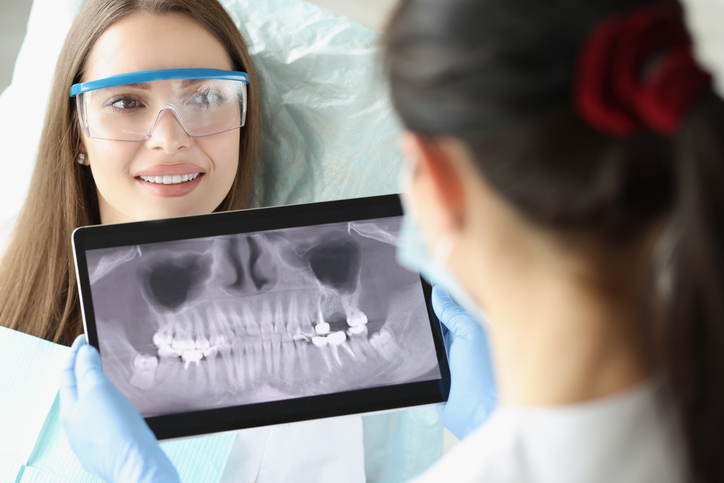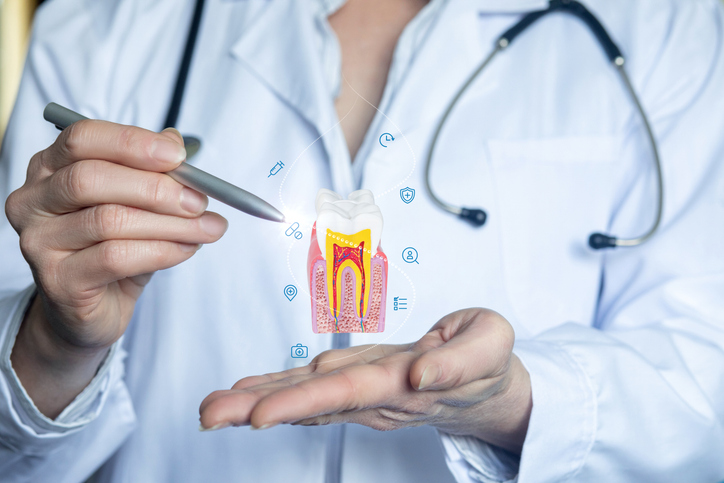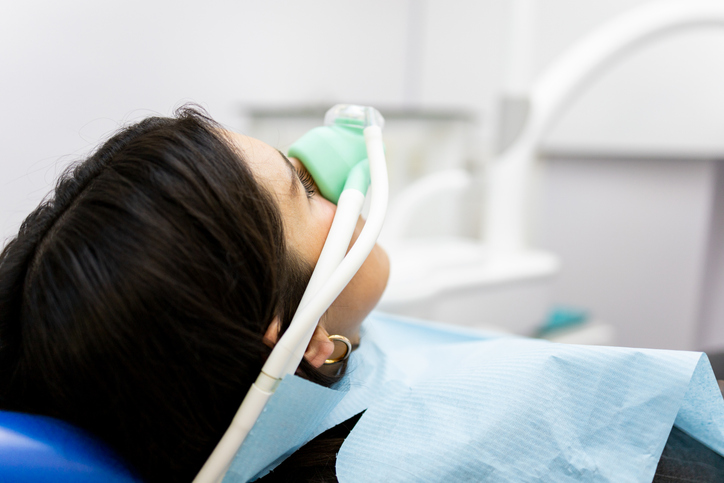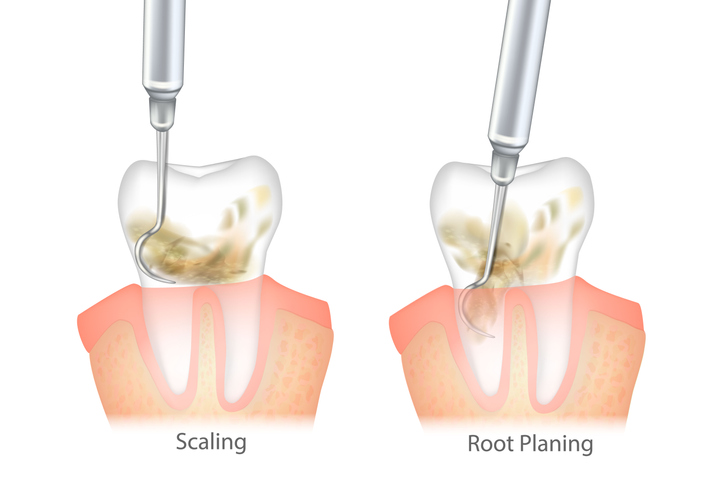When it comes to protecting your oral health, most people think of routine checkups and cleanings at the general dentist. These visits are essential and form the foundation of good dental care. However, there are times when going beyond basic care is not only beneficial but necessary for your long-term health. That is where a periodontist comes in.
At Pinnacle Center Dental Implants and Periodontics in Pittsburgh, PA, Dr. Katherine L. Roll and Dr. Kelly B. Williams provide advanced treatments for gum disease, dental implants, and other conditions that affect the supporting structures of your smile. While some specialized procedures may not be fully covered by dental insurance, the benefits of receiving care from a periodontist can have a lasting impact on both your oral and overall health.
Below we will explore why seeing a periodontist is worth the investment, what sets specialized care apart, and how our office helps patients move forward with clarity and confidence.
Beyond Basic Care: The Role of a Periodontist
A periodontist is a dental specialist who has completed additional years of training beyond dental school. This training focuses on the prevention, diagnosis, and treatment of gum disease, as well as expertise in dental implant placement and other advanced procedures.
General dentists are excellent at providing cleanings, fillings, crowns, and preventive services, but when gum disease becomes more complex or tooth replacement requires surgical precision, a periodontist is the professional best equipped to handle those needs.
Some of the advanced treatments periodontists provide include:
- Scaling and root planing for more advanced stages of gum disease
- Periodontal surgery to restore gum and bone health
- Dental implant placement to replace missing teeth with long-lasting solutions
- Bone grafting and sinus lifts to rebuild the foundation for implants
- Cosmetic periodontal procedures to correct issues such as receding gums or uneven gumlines
- Tooth extractions when needed to preserve overall oral health
These procedures go beyond what most general dentists offer and can significantly improve both the health and appearance of your smile.
Why Specialized Care Matters
Many people put off seeing a periodontist because they assume their general dentist can handle everything. While this may be true for routine issues, gum disease and tooth loss are complex conditions that require advanced knowledge to treat effectively.
Gum disease is the leading cause of tooth loss in adults. Left untreated, it can progress silently, causing inflammation, bone loss, and eventually tooth loss. Periodontists have the training to identify the earliest signs of gum disease and provide treatments that stop it before it progresses.
Additionally, when it comes to dental implants, precision and long-term success depend on the skill of the provider. Periodontists are uniquely trained to place implants in a way that ensures proper integration with the bone and stability for many years to come. This expertise minimizes complications and maximizes success rates.
Specialized care is not just about treating problems. It is also about preventing them. By seeing a periodontist early, patients can avoid more complex and costly procedures in the future.
The Benefits of Receiving Care at Pinnacle Center
Choosing the right provider for your periodontal and implant needs makes a significant difference. At Pinnacle Center, our team is committed to delivering exceptional results in a compassionate and supportive environment. Patients who come to our office benefit from:
- Expertise and experience: Dr. Roll and Dr. Williams have advanced training in periodontics and implant dentistry. They have dedicated their careers to helping patients restore oral health and confidence.
- Comprehensive treatment options: Our office provides both non-surgical and surgical solutions, ensuring patients receive the right treatment at the right time.
- State-of-the-art technology: From digital imaging to advanced surgical tools, we use the latest technology to improve accuracy and comfort.
- Personalized care: Every patient’s situation is unique. We take the time to design treatment plans that reflect individual needs, health goals, and lifestyle considerations.
- A focus on long-term outcomes: Our goal is not just to fix immediate problems but to create lasting improvements in oral health.
Patients frequently report that the care they receive at Pinnacle Center goes beyond what they expected. They appreciate the thoroughness of the evaluations, the clarity of treatment explanations, and the ongoing support throughout their care journey.
The Cost of Care Versus the Value of Health
One concern many patients share is whether their insurance will cover specialized treatments. While some procedures are partially covered, others may not be included in a standard dental insurance plan. This can cause hesitation, but it is important to consider the long-term value of specialized care.
Investing in periodontal treatment or dental implants is not just about improving your smile today. It is about preventing serious problems tomorrow. Untreated gum disease can lead to tooth loss, systemic inflammation, and even increased risks for conditions such as heart disease and diabetes. Dental implants, though sometimes considered costly upfront, provide a permanent solution that eliminates the need for repeated repairs or replacements often associated with bridges or dentures.
When viewed through the lens of long-term health and reduced future costs, specialized periodontal care often pays for itself many times over.
How Pinnacle Center Helps Patients with Insurance
We know that navigating dental insurance can feel overwhelming. That is why our office makes it a priority to help patients understand costs clearly and feel confident in their decisions.
Here is how we assist patients with financial clarity:
- Procedure information: We provide patients with the codes for each procedure so they can have informed conversations with their insurance company.
- Claim support: Our team assists with filing claims to ensure you receive the reimbursement you are entitled to.
- Clear fee presentation: Before any treatment begins, we provide a complete breakdown of all fees for procedures performed in our office.
- Flexible payment options: For treatments not covered by insurance, as well as any other care, we offer financing solutions to make treatment accessible and affordable.
Our goal is to eliminate financial surprises and help you feel confident moving forward with the care you need.
The Link Between Periodontal Health and Overall Health
Another reason seeing a periodontist is a smart decision is the growing body of research connecting gum health to overall health. Studies have shown that chronic gum disease is associated with conditions such as diabetes, cardiovascular disease, respiratory infections, and even pregnancy complications.
By addressing periodontal problems early, patients may reduce their risk of developing or worsening these systemic conditions. In other words, investing in your gums is also an investment in your overall health and quality of life.
Patient Confidence and Quality of Life
Beyond health benefits, specialized care also improves confidence and quality of life. Patients who receive treatment for gum disease often notice fresher breath, healthier gums, and more comfort when eating. Those who replace missing teeth with dental implants frequently report feeling more confident in social situations and enjoying foods they previously avoided.
These improvements in daily life are priceless. They extend beyond the mouth to affect how patients feel about themselves and how they interact with others.
Invest in Your Long-Term Smile
When deciding whether to see a periodontist, remember that the decision is about more than insurance coverage. It is about protecting your health, preserving your teeth, and improving your quality of life.
At Pinnacle Center Dental Implants and Periodontics, Dr. Roll and Dr. Williams are dedicated to helping patients in Pittsburgh achieve healthier smiles that last a lifetime. Whether you need treatment for gum disease, are considering dental implants, or simply want a specialist’s opinion, our team is here to provide expert guidance and compassionate care.
Ready to take the next step?
Contact us today to schedule your consultation and discover how specialized periodontal care can transform your smile and your health.



 Maintaining optimal periodontal health is crucial for your overall well-being, and finding the right periodontist is a significant step in ensuring your gums and teeth receive the best possible care. At Pinnacle Center Dental Implants and Periodontics, we understand how important it is to choose a periodontist who meets your needs and expectations.
Maintaining optimal periodontal health is crucial for your overall well-being, and finding the right periodontist is a significant step in ensuring your gums and teeth receive the best possible care. At Pinnacle Center Dental Implants and Periodontics, we understand how important it is to choose a periodontist who meets your needs and expectations.  A radiant smile is often considered one of our most attractive features. However, for some individuals, an excessive display of gum tissue when smiling—commonly known as a “gummy smile”—can be a source of self-consciousness. Today, we’ll explore the concept of a gummy smile, its impact on confidence, and the various cosmetic options available to help you achieve the smile you’ve always desired.
A radiant smile is often considered one of our most attractive features. However, for some individuals, an excessive display of gum tissue when smiling—commonly known as a “gummy smile”—can be a source of self-consciousness. Today, we’ll explore the concept of a gummy smile, its impact on confidence, and the various cosmetic options available to help you achieve the smile you’ve always desired. Welcome to Pinnacle Center Dental Implants and Periodontics. Today, we will explore an essential aspect of modern dental care that has transformed the experience for many of our patients—
Welcome to Pinnacle Center Dental Implants and Periodontics. Today, we will explore an essential aspect of modern dental care that has transformed the experience for many of our patients— At Pinnacle Center Dental Implants and Periodontics, we understand the importance of dental stability in maintaining a healthy and confident smile. Dental stability isn’t merely a cosmetic concern. It plays a crucial role in chewing food efficiently, preserving jawbone health, and supporting overall facial structure.
At Pinnacle Center Dental Implants and Periodontics, we understand the importance of dental stability in maintaining a healthy and confident smile. Dental stability isn’t merely a cosmetic concern. It plays a crucial role in chewing food efficiently, preserving jawbone health, and supporting overall facial structure. Bad breath and dry mouth are two common oral health issues that many people experience. Both conditions can be uncomfortable, embarrassing, and may impact one’s overall quality of life. Furthermore, they can potentially signal underlying dental or health problems that need to be addressed. Today, we will explore the causes of bad breath and dry mouth, as well as provide helpful tips for managing and preventing these issues. We hope that we can help you maintain optimal oral health and enjoy a more confident smile.
Bad breath and dry mouth are two common oral health issues that many people experience. Both conditions can be uncomfortable, embarrassing, and may impact one’s overall quality of life. Furthermore, they can potentially signal underlying dental or health problems that need to be addressed. Today, we will explore the causes of bad breath and dry mouth, as well as provide helpful tips for managing and preventing these issues. We hope that we can help you maintain optimal oral health and enjoy a more confident smile. Gum disease is a common dental problem that affects millions of people worldwide. It is caused by the buildup of plaque and bacteria on the teeth and gums, which can lead to inflammation, bleeding, and eventually tooth loss. Traditional treatments for gum disease include
Gum disease is a common dental problem that affects millions of people worldwide. It is caused by the buildup of plaque and bacteria on the teeth and gums, which can lead to inflammation, bleeding, and eventually tooth loss. Traditional treatments for gum disease include  When plaque builds up on teeth, it can harden into tartar and cause several complications for your oral health, even advancing to periodontal disease as it worsens. At Pinnacle Center Dental Implants and Periodontics, we recommend a
When plaque builds up on teeth, it can harden into tartar and cause several complications for your oral health, even advancing to periodontal disease as it worsens. At Pinnacle Center Dental Implants and Periodontics, we recommend a  If you have too much pink in your smile, you probably have an excessive gingival display, otherwise known as a “gummy” smile. Around 10% of the population has this aesthetically unappealing dental condition, affecting women slightly more than men. Fortunately, dental procedures like
If you have too much pink in your smile, you probably have an excessive gingival display, otherwise known as a “gummy” smile. Around 10% of the population has this aesthetically unappealing dental condition, affecting women slightly more than men. Fortunately, dental procedures like  If you’re a periodontal patient, it’s important to understand the importance of regularly scheduling appointments with your
If you’re a periodontal patient, it’s important to understand the importance of regularly scheduling appointments with your